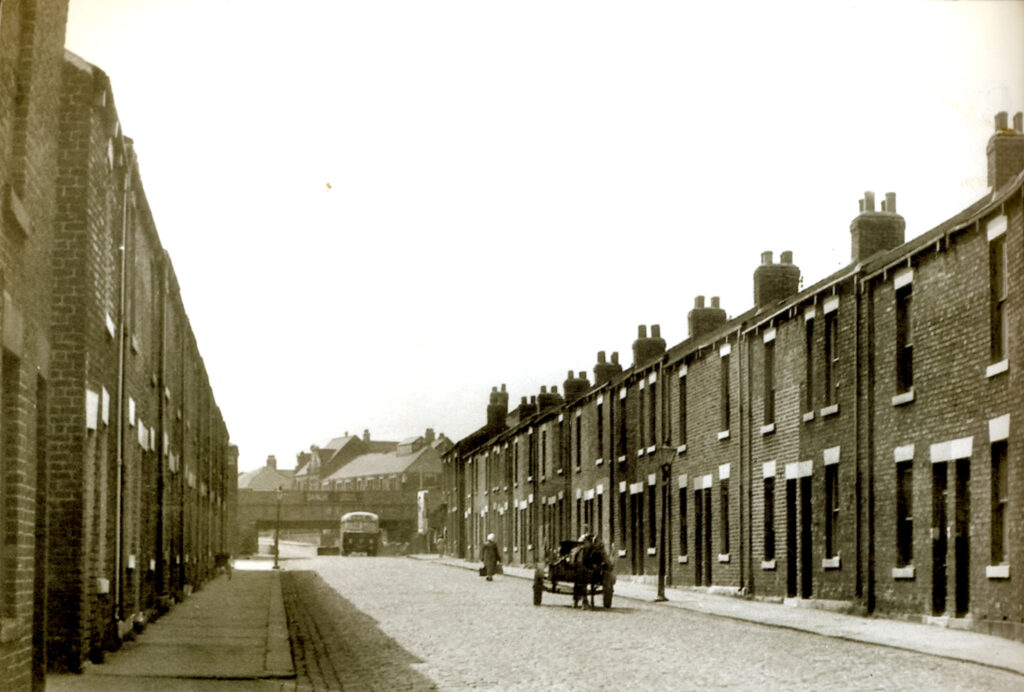Palmer shipyard brought much-needed work to Jarrow. With the transport system being most irregular he needed his workers living nearby. The photograph below shows Palmer Street where some of his workers lived.
Transport links into Jarrow during this time were poor realizing this and the need for his workers to be within reliable distance of his shipyard he commissioned the building of houses close by.

Built in the early part of the twentieth century these terraced houses shown in the photo could be found throughout Jarrow. most of Palmer’s 10,000-plus workforce lived in this type of accommodation.
Poorly lit and cramped terraced houses like these could be found throughout Jarrow. Some years later in the 50s and 60s, their houses were demolished to be replaced by modern dwellings of the time.
In the distance, you can see the Hill Street railway bridge. Being a low bridge many new double-decker bus drivers in later years were to take the wrong route resulting in the loss of the bus’s roof.


The above photos are the same view many years later. On the left is a modern council estate. To the right, the houses built to accommodate Palmer’s workers have since been demolished. The trees lining the right-hand side of the roadway have been allowed to grow and act as a useful screen blotting out a new industrial estate to the right of the photograph.
In the distance can be seen Hill Street Railway Bridge, that particular eyesore has never changed (my personal opinion) and is no different now than it was in Palmer’s days. even today an occasional double-decker bus has lost its roof because the driver has been unfamiliar with the route.